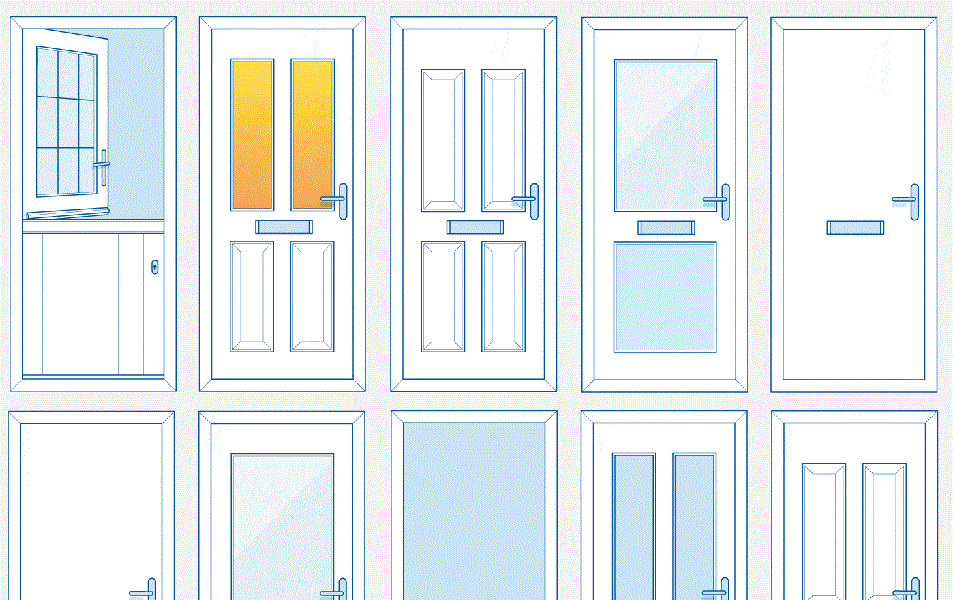
The front door of a house serves as its first impression, a gateway that reflects the character and style of the home within. In the United Kingdom, where architectural diversity is abundant, front doors come in various styles, materials, and designs. Choosing the right front door is not only a matter of aesthetics but also a consideration of security, energy efficiency, and functionality.
Contents
Timber Doors
Timber doors, known for their enduring charm, are a timeless option that adds warmth and character to homes. Crafted from various wood types like oak, mahogany, and pine, these doors offer a distinctive aesthetic appeal.
They can be stained or painted to match the house’s design, making them versatile for both traditional and modern residences. Despite requiring regular maintenance to prevent weathering, their durability and charm make them a popular choice.
Wooden doors, the original door type, are robust and attractive but need upkeep to avoid warping or peeling paint. They are particularly suitable for traditional properties, and some listed buildings may mandate the use of wood for doors and windows.
While timber is versatile and can enhance the look of even modern houses, cost-effective alternatives like composite or uPVC doors are often preferred.
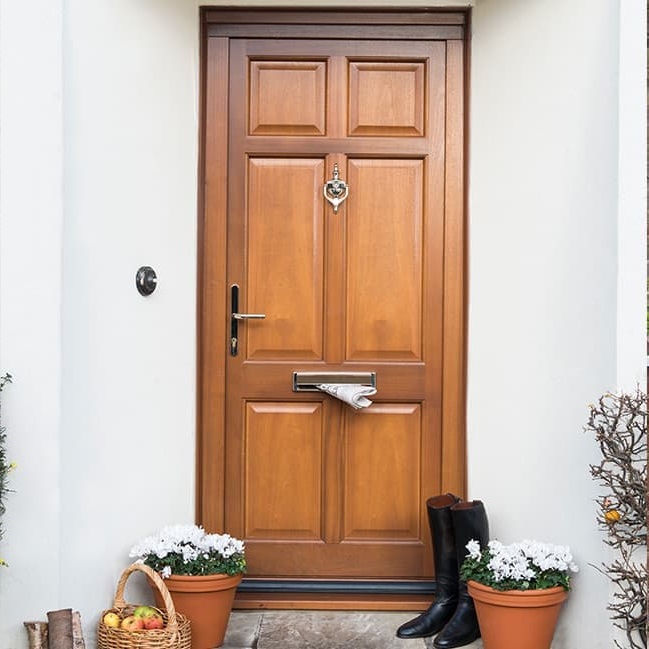
Composite Doors
Composite doors blend the attractive appearance of timber with the low upkeep and resilience of modern materials. Constructed from uPVC, timber, foam, and glass-reinforced plastic (GRP), these doors are renowned for their robustness, security features, and energy efficiency.
With diverse styles and colours available, they cater to various architectural preferences, making them a favoured alternative to uPVC front doors. These doors boast a construction featuring a reinforced steel frame, hardwood frame, foam core filling, and a weather-resistant GRP outer skin, ensuring energy efficiency, security, and longevity.
The GRP outer skin, known for its resilience in extreme weather, contributes to the door’s durability. The moulded wood grain effect and durable colour finish offer the aesthetic appeal of timber without the need for maintenance. Suitable for any property type, composite doors are highly recommended and have become the preferred door choice.
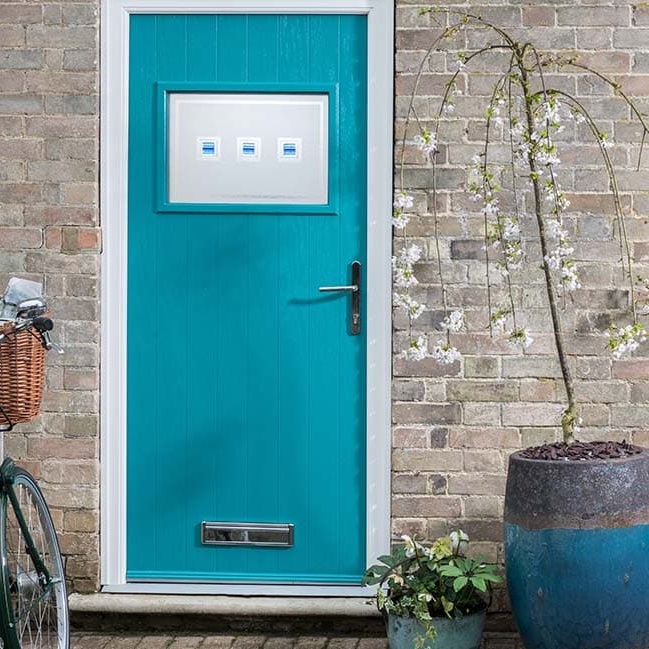
uPVC Doors
uPVC doors, popular in the UK for their practicality and affordability, are known for durability, low upkeep, and energy efficiency. They offer various styles and finishes, with technological advancements providing realistic wood grain options. Introduced in the seventies as a maintenance-free front door choice, uPVC quickly became a standard in new-build houses.
Early security concerns were addressed with anti-snap locks, meeting British Security Standards in modern uPVC doors. Quality matters, as inferior materials can lead to warping and discolouration over time. A well-maintained uPVC door can last 30-35 years, making it suitable for modern properties and new builds, but less recommended for traditional or period homes.
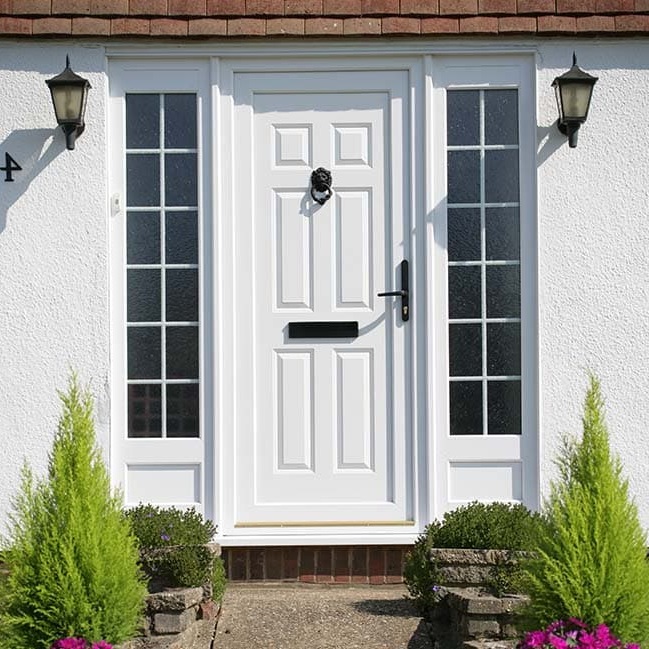
Aluminum Doors
Aluminium doors are a modern and stylish option known for their sleek appearance and durability. They are lightweight, corrosion-resistant, and suitable for various weather conditions. These doors often feature large glass panels, allowing ample natural light, and making them popular in modern designs.
The material’s durability and low maintenance needs, with resistance to rust and scratches, make aluminium doors a premium choice. Advancements in energy efficiency, such as using a polyamide thermal insert, have addressed previous concerns about their cold properties.
Glazed doors offer a slim profile for maximum glass area, while solid aluminium doors provide strength and security. Although the most expensive front door option, aluminium doors boast an expected lifetime of 45 years with minimal maintenance, making them ideal for contemporary properties seeking a sleek and robust finish.
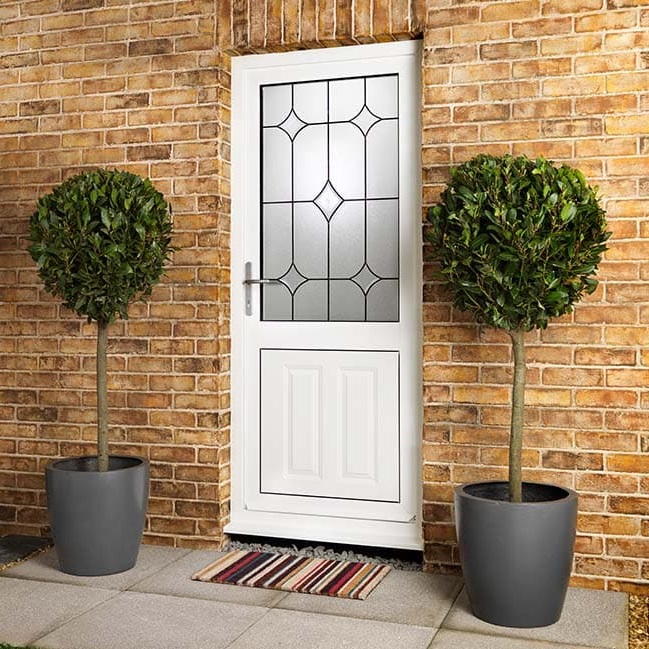
French Doors
French doors, known for their timeless design, bring a touch of sophistication to any home. Comprising two panels that open outward, often with full-length glass panes, they are a popular choice for seamlessly connecting indoor and outdoor spaces like garden patios. These doors, originally designed in 17th-century France, were intended to flood rooms with light, initially used as interior doors before becoming entrances to gardens.
Technically, a French door is a single-glazed panel, while a pair is referred to as French windows, though commonly known as French doors. They suit both traditional and modern properties, adding an elegant touch.
Keep in mind that French doors require space to open outward, and it’s essential to use catches or door stops to prevent slamming in windy conditions. Choosing between French doors, patio doors, or bi-fold doors is a matter of personal preference for those who appreciate the graceful style and unobstructed views they offer.
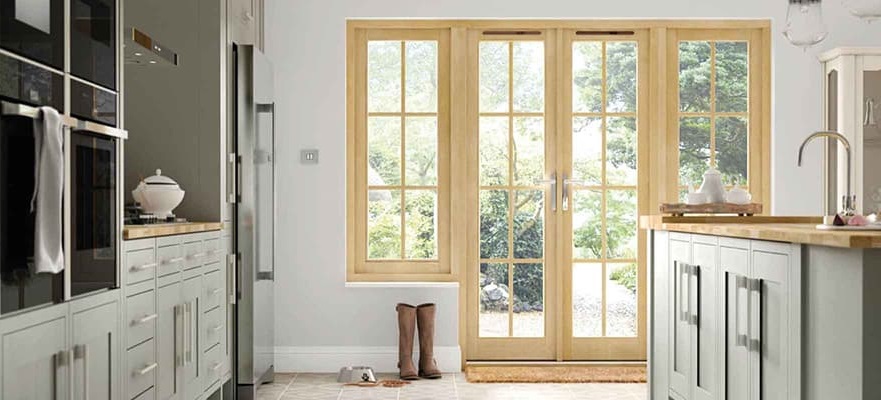
Bi-fold Doors
Bi-fold doors, made of materials like uPVC, aluminium, or timber, have become popular for their capacity to seamlessly connect indoor and outdoor areas. They consist of multiple panels that fold and slide along a track, offering a stylish and modern feel.
While glass bi-fold doors have gained popularity in recent years, the concept has ancient roots, with evidence found in Pompeii, suggesting Romans introduced it to the UK.
Originally, wooden folding doors were used for garages and stables. In contemporary settings, glazed bi-fold doors, commonly found in kitchens and conservatories, create a vast open space, bridging the gap between indoor and outdoor living. This versatile design suits both modern and traditional properties.
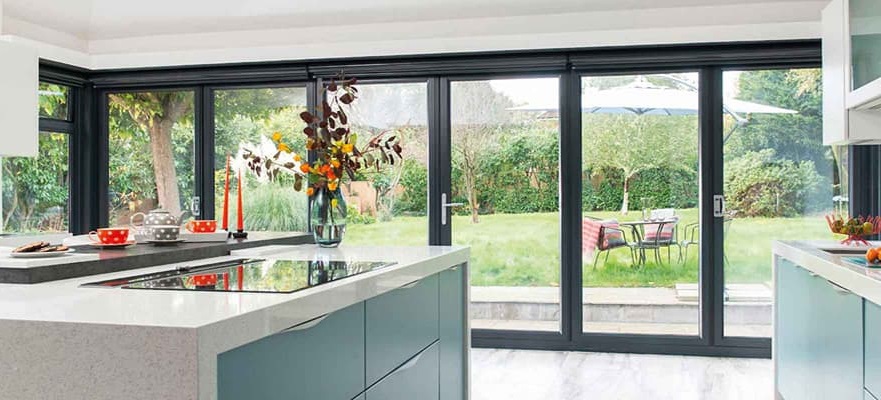
Patio Doors
Post-World War II in the UK witnessed a surge in the popularity of sliding patio doors, influenced by the principles of Modernist design. The inspiration for this sliding door design can be traced back to traditional Japanese design.
In contrast to Japanese sliding doors adorned with paper coverings, the Western adaptation embraced the use of glass. This shift allowed for extensive glass panels in walls, facilitating the infusion of natural light into interior spaces.
Typically installed at the rear of residences, patio doors serve to establish a seamless connection between indoor and outdoor areas, linking living spaces with the adjoining garden.
Beyond their external use, sliding doors find utility within the internal layout of houses, effectively dividing expansive areas. Doors designed to slide discreetly into concealed recesses are referred to as pocket doors, often employed in areas with spatial constraints, such as bathrooms.
While patio doors complement a variety of properties, they are predominantly associated with houses constructed from the mid-20th century onward and contemporary modern architectural designs.
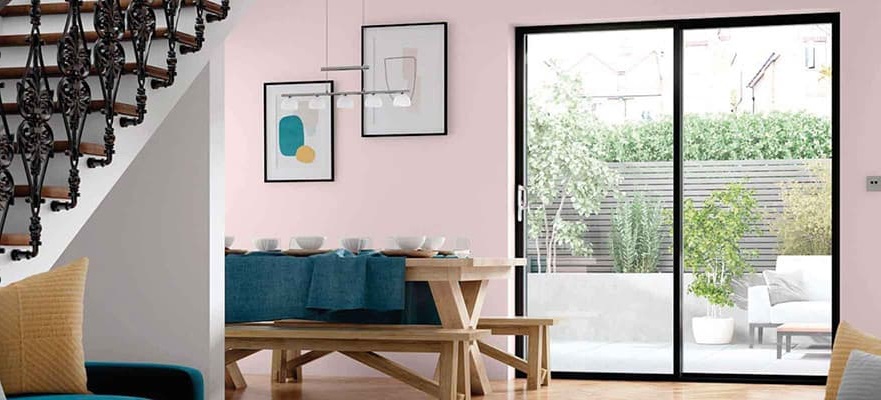
Glazed Doors
The advantage of employing a door with transparent panels lies in its ability to usher natural light into dimly lit hallways or entrance areas. Utilizing obscured frosted glass ensures privacy, while the use of toughened or laminated glass enhances security, guarding against both accidental and intentional breakages.
A fully glazed door imparts an ultra-modern ambience and is typically associated with contemporary-style residences. Conversely, front doors that are partially or half-glazed are more prevalent and better suited for traditional properties.
In Victorian-era houses, a two-panel glazed internal door gained popularity, often featuring patterned glass, particularly in bathroom spaces. Both Edwardian and Victorian homes showcased front doors with glazed elements, typically adopting a two-panel configuration adorned with intricate patterned stained glass.
A front door equipped with a glazed portal is a commonplace choice, facilitating a preview of visitors before opening. This design permits some natural light to filter into the entrance hall while preserving a degree of privacy.
Conversely, a back door with half-glazing is favoured, allowing a visual connection to the exterior garden space.
Dutch Doors (Stable Doors)
A divided door, commonly referred to as a stable door, known as a Dutch door in the United States, or simply a half door, is a door that is horizontally split into two sections. This unique design enables the entire door to be opened, or the top or bottom half can be opened independently.
The stable door, steeped in history spanning centuries, has been a prevalent architectural style in rural settings, particularly in cottages.
This door design offers practical benefits, allowing for the top half to be opened to facilitate ventilation within the house while effectively keeping animals out or ensuring the safety of children. Additionally, it serves to prevent dirt and debris from entering the kitchen, especially in the context of a farmyard environment.
Popularly embraced in country properties, the stable door, often utilized as a kitchen entrance, fosters a seamless connection with the outdoors. This style proves to be both functional and aesthetically fitting for the rustic charm of rural dwellings.
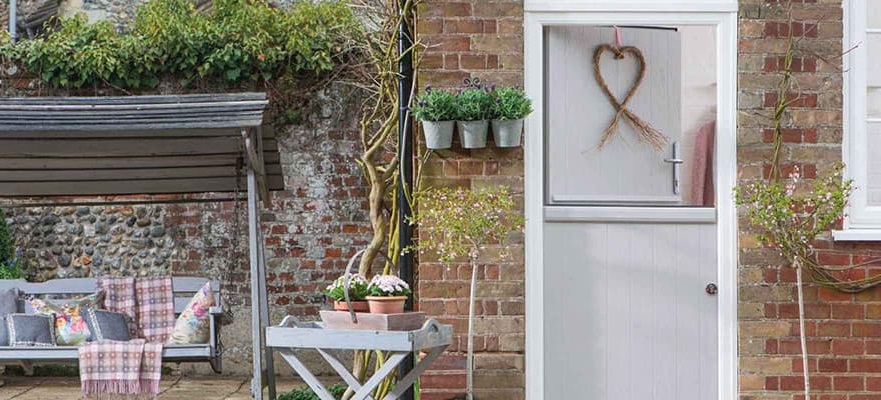
Flush Doors
A flush door represents the epitome of simplicity, characterized by a smooth and unadorned surface on both sides.
These doors exude a contemporary aesthetic and achieve a striking visual appeal, especially when adorned with a high-quality wooden veneer like Oak.
Flush doors are ideal for residences with a modern flair, which are best suited for those seeking a sleek and minimalist design.
While commonly employed as interior doors, flush doors occasionally find application as exterior front doors, imparting a clean and streamlined look to the entrance of both contemporary homes and spaces with a preference for straightforward elegance.
Panel Doors
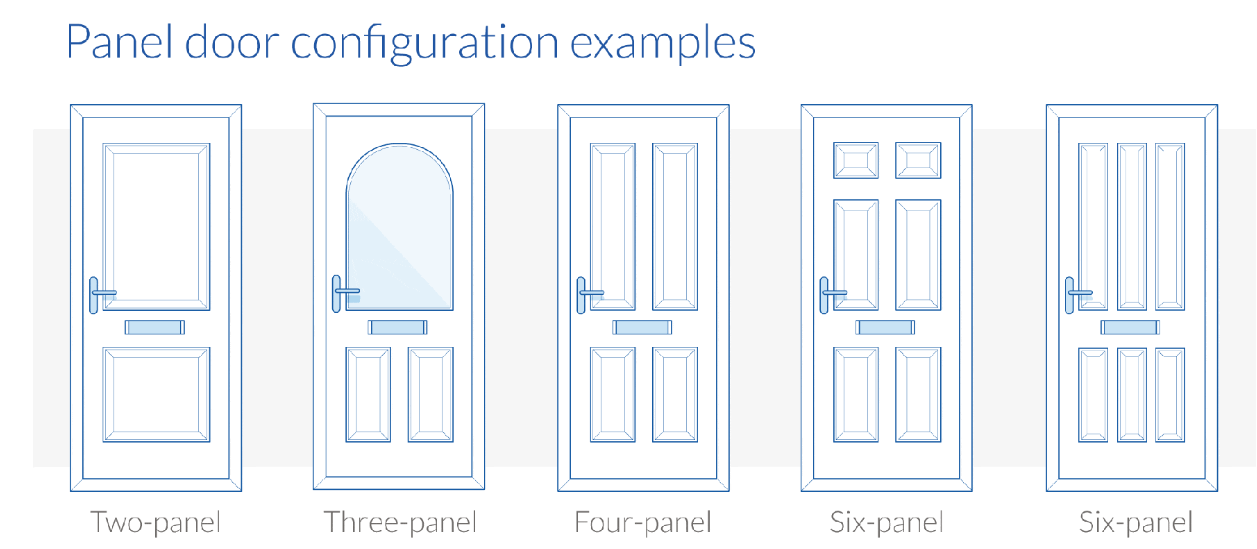
Panel doors can be likened to the casement windows equivalent for doors, representing a versatile and widely favoured door style in the United Kingdom, both for exterior and interior use.
These doors, recognized for their traditional appeal, possess the flexibility to adopt a contemporary look with the appropriate finish and colour, making them suitable for various house types.
Characterized by moulded panels arranged in diverse variations and configurations, panel doors offer a classic aesthetic. Furthermore, they can be adapted to a modern setting through the right choice of finish and colour, complementing a broad spectrum of house styles.
When it comes to front doors, a prevalent design involves moulded features, and some may incorporate glazed panels, creating a door that is partially or entirely glazed.
FAQs
What is the best material for a front door UK?
The best material for a front door in the UK is often hardwood, such as oak or mahogany, due to its durability, resistance to weathering, and aesthetic appeal.
What type of door is best for front door?
When considering the type of door for a front entrance, a solid wood door is often considered the best choice for its classic look, sturdiness, and insulation properties. Alternatively, composite doors, combining materials for strength and energy efficiency, are also a popular and practical option.



